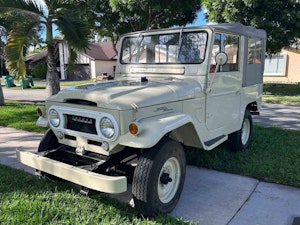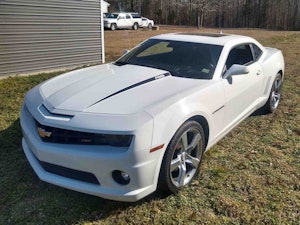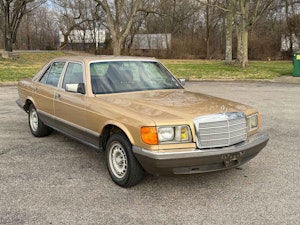Media | Articles
The 2019 Mercedes CLS53 Coupe is a better-looking E-Class, but not a brash AMG
The Mercedes-AMG CLS53 Coupe, as car names go, stomps on tradition. It has four doors but claims to be a coupe. The 53 represents not engine displacement, but merely a number between 43 and 63—two other AMG numbers that have essentially lost any link to the bits under the hood. It’s a reminder that automotive labels are often just meaningless marketing tools.
What, then, is the CLS53 supposed to be? The CLS-Class, which is the stylish sibling to the E-Class. CLS and E share the same 115.7-inch wheelbase and underpinnings. Minor reductions in trunk space and rear seat headroom are the practical sacrifices given in the name of fashion, although the CLS is more sensible than the shorter E-Class coupe and convertible, owing to its extra apertures and rear seats fit for human adults.
AMG all the the things
20190401164813)
20190401165314)
20190401164831)
The 53 model is an intermediate step in the AMG hierarchy, sitting below the all-out 63 models with their fire-breathing twin-turbo V-8s and the monster twin-turbo V-12 65 models. There’s no CLS63, but the E63 sedan costs $34,800 more than the E53, for some perspective.
Marketplace
Buy and sell classics with confidence
On the lower end of AMG’s pecking order is the four-cylinder 35 and V-6 43, offered in smaller vehicles. This multi-tiered strategy means that are now 47 different Mercedes-AMG models to choose from today. The Mercedes’ 53 models use an enhanced version of a standard engine, as opposed to the hand-built pieces nestled under the hood of V-8-powered 63 and V-12 65 models. While the CLS53 is neither as savage or as special as the higher-spec AMGs, it doesn’t feel watered down. There may be no such thing as too much horsepower, but there’s also such a thing as enough horsepower. The CLS53 has the latter and then some.
A straight-six for the modern age
20190401170020)
The 53 is based on a new straight-six also used on Mercedes-Benz 450 models. AMG 53 models get a larger turbo to increase output by 67 horsepower and 15 pound-feet of torque, with total figures of 429 hp and 384 lb-ft. That’s only 40 shy of the 2003 E55, which used a 5.4-liter V-8. (Accurate nomenclature has never been an AMG tradition.)
There are several tricks up this inline-six engine’s sleeve, starting with a 48-volt starter-generator that puts out 21 hp and 184 pound-feet on its own. That 48V system also powers an electric auxiliary compressor. That’s Mercedes-speak for an electric turbocharger, the wording carefully selected to avoid any confusion with conventional turbo- or superchargers. The electric compressor can spool up in a third of a second, providing fast response while the exhaust-driven turbocharger builds its own boost.
The CLS53, and the related E53s, only comes paired with a nine-speed automatic transmission routing power to all four wheels. A clutch pack at the rear of the transmission sends all power to the rear wheels or diverts up to 50 percent of power to the front wheels when needed.
Sporty enough to notice
20190401164847)
20190401165515)
20190401165910)
20190401164958)
You can spot the difference between the CLS53 and the lesser CLS 450 by the AMG badge on the twin-blade grill, black mirror caps, round exhausts, and a spoiler on the trunk lid in body color or optional carbon fiber. Inside, a square-bottom steering wheel and grippy sport seats both feature AMG badges.
Get behind the wheel, punch the start button, and slap the gear selection stalk into D and you’re ready to start moving. Although anyone new to this era of Mercedes-Benz machines will want to spend some time getting familiar with the cabin first. Like its showroom siblings, the CLS features twin 12.3-inch screens in the cockpit that serve as the dashboard and infotainment displays. There are three instrument cluster themes to choose from, and each one puts critical information front-and-center. Further information like navigation directions, current gear selection, or instantaneous readouts of turbo boost, horsepower, and torque are available by swiping on the tiny left touchpad on the steering wheel.
From there it gets more complicated: the right steering wheel touchpad controls infotainment, also accessible by either the center touchpad or click wheel. Controlling all these electronic functions quickly gets less intimidating but still takes discipline to keep your eyes on the road. If you want the peace of mind that comes with automatic emergency braking, that’s included in the Driver Assistance Package for an extra $2250, which seems a bit cold-blooded for a car with an $80,895 base price.
Fortunately, the setting you’re most likely to care about when driving the CLS53 is easy to reach, and that’s the drive mode rocker switch on the center console. It toggles through Eco, Comfort, Sport, Sport+, and a customizable individual setting. This tweaks the throttle response, exhaust sound (both real and artificial), suspension setting, transmission programming, and steering.
20190401165140)
There’s a noticeable transition as you switch between modes, although the steering has the typical isolation of a modern luxury cruiser in all settings. Comfort offers up a supple ride with some body roll through corners. Sport tightens up the ride, and by the time you get to Sport+ the adjustable dampers give up on compensating for skinny sidewall on the optional 245/35-20 front and 275/30-20 rear wheels. There’s plenty of grip, though, and the only time I got the CLS53 unsettled was on cambered crests in the road where at least two corners of the car are trying to do different things than the other two.
All the fancy electronic trickery in the engine is undetectable to the driver. It just pulls, strong and fluid at first, then more urgently from 3500 rpm onward. Lag? What lag? There’s just smooth acceleration at every point from idle to the 6800-rpm redline. The CLS53 lacks the neck-straining wallop of the AMG 63 cars, but that’s not this car’s intended character. Like the difference between the even, mid-range tone of the 53’s straight-six exhaust note and the earth-shaking rumble of the 63 V-8 the CLS53 is more subtle. It’s not too far from older AMG models (the 1995 C36 comes to mind, also powered by an inline-six) that were faster, but not wildly so.
Back then, in the mid-’90s, AMG models were the most that could be done with the existing hardware. Today, a car like the CLS53 is an exercise in restraint, but doesn’t suffer for it. It’s fun to drive and comfortable in equal measure, an archetype of performance composure. Which is just what you’d expect, given the tradition Mercedes-Benz and AMG have for making fast, luxurious transportation. If this signals the next step for AMG, model proliferation will enhance, and not dilute, what the brand has come to represent.
20190401165229)








20190401164732)
20190401164745)
20190401164800)
20190401164944)
20190401165022)
20190401165040)
20190401165100)
20190401165114)
20190401165127)
20190401165209)
20190401165247)
20190401165342)
20190401165401)
20190401165535)
20190401165558)
20190401165627)
20190401165720)
20190401165759)
20190401165836)
20190401165949)
20190401170055)

